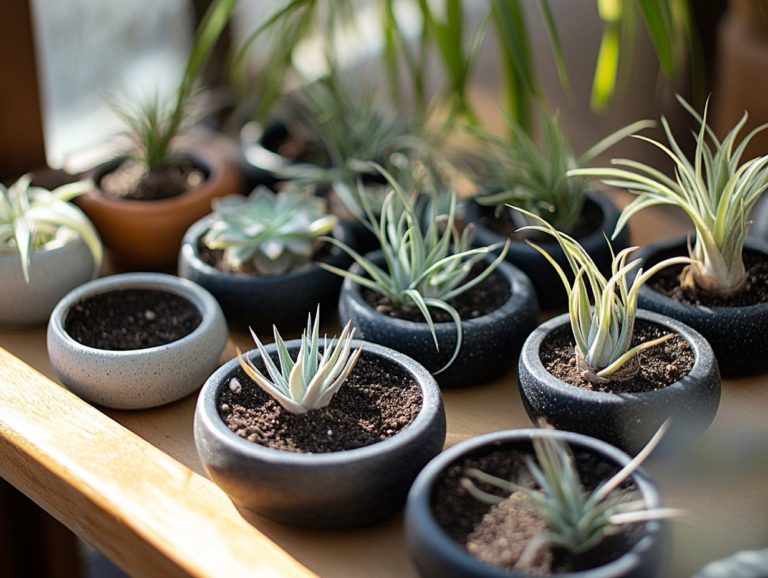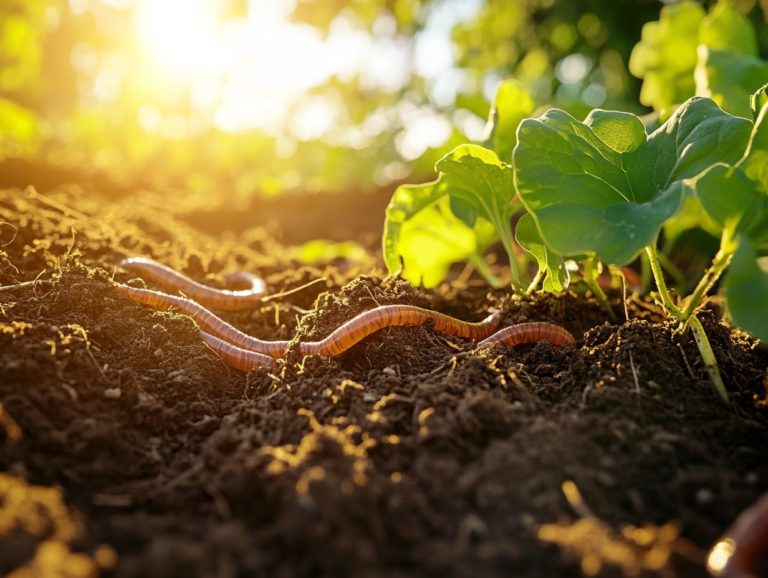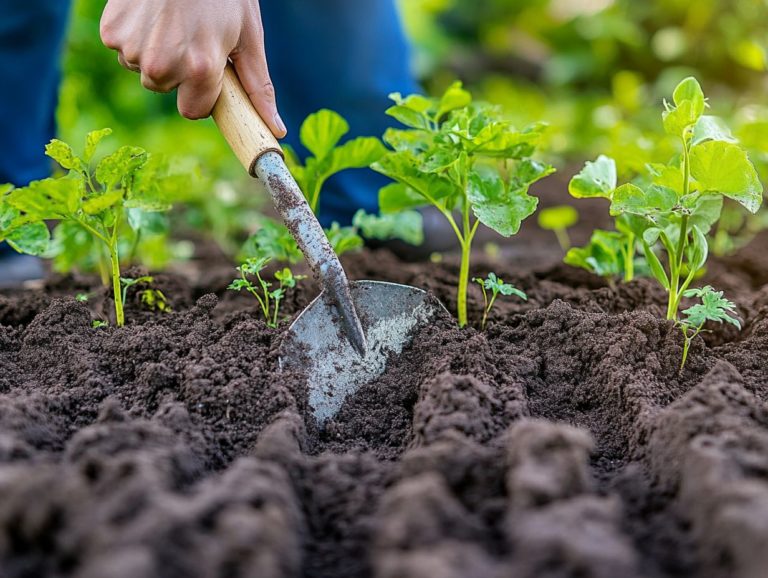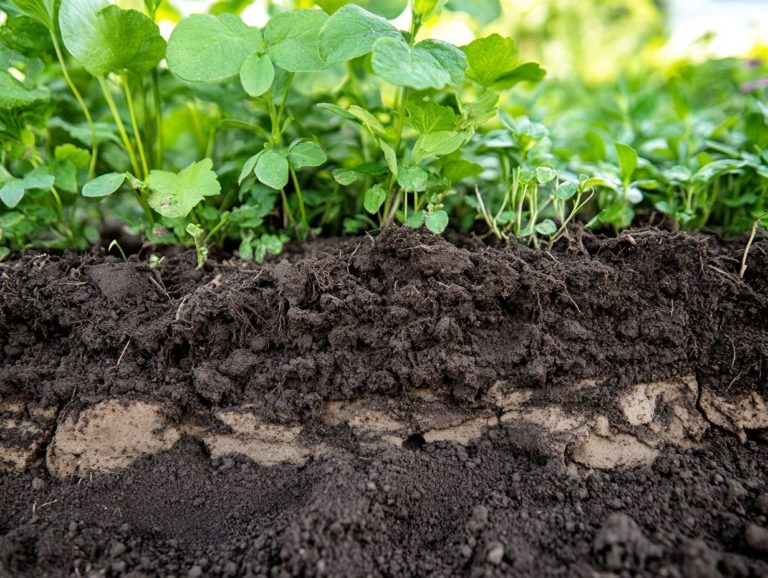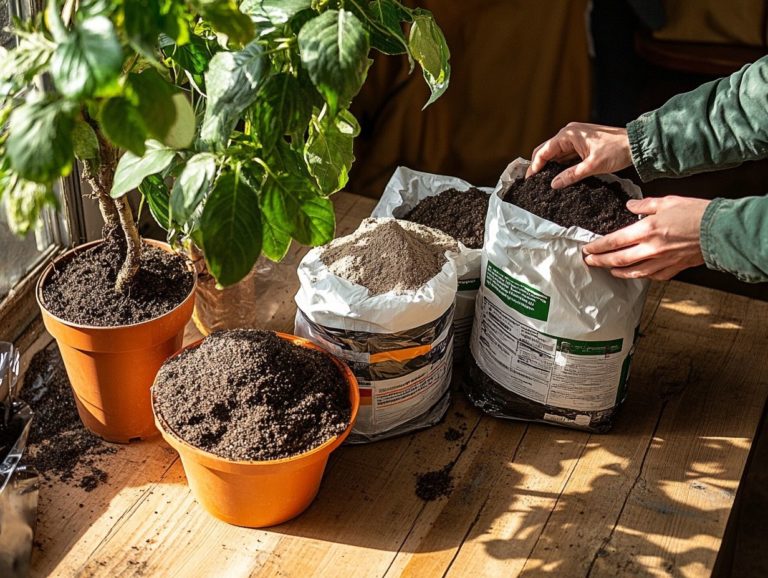Choosing the Right Potting Mix for Your Plants
Choosing the right potting mix is essential for the health of your plants. This guide will help you select the perfect mix for thriving growth!
You have many options to choose from! Learn about potting compost, inert media, and how they differ from garden soil.
Avoid common mistakes that can hinder your plants’ growth. This guide includes tips to keep your greenery vibrant and healthy!
Contents
- Key Takeaways:
- 1. Understanding the Basics of Potting Mix
- 2. Types of Potting Mixes Available
- 3. Factors to Consider When Choosing a Potting Mix
- 4. How to Choose the Right Potting Mix for Different Types of Plants
- 5. Common Mistakes to Avoid When Choosing a Potting Mix
- 6. How to Prepare and Use Potting Mix for Planting
- 7. Tips for Maintaining Healthy Plants with the Right Potting Mix
- 8. DIY Potting Mix Recipes for Different Types of Plants
- 9. Understanding the Nutrient Needs of Your Plants
- 10. How to Reuse and Recycle Potting Mix
- What Are the Benefits of Using the Right Potting Mix for Your Plants?
- Frequently Asked Questions
Key Takeaways:
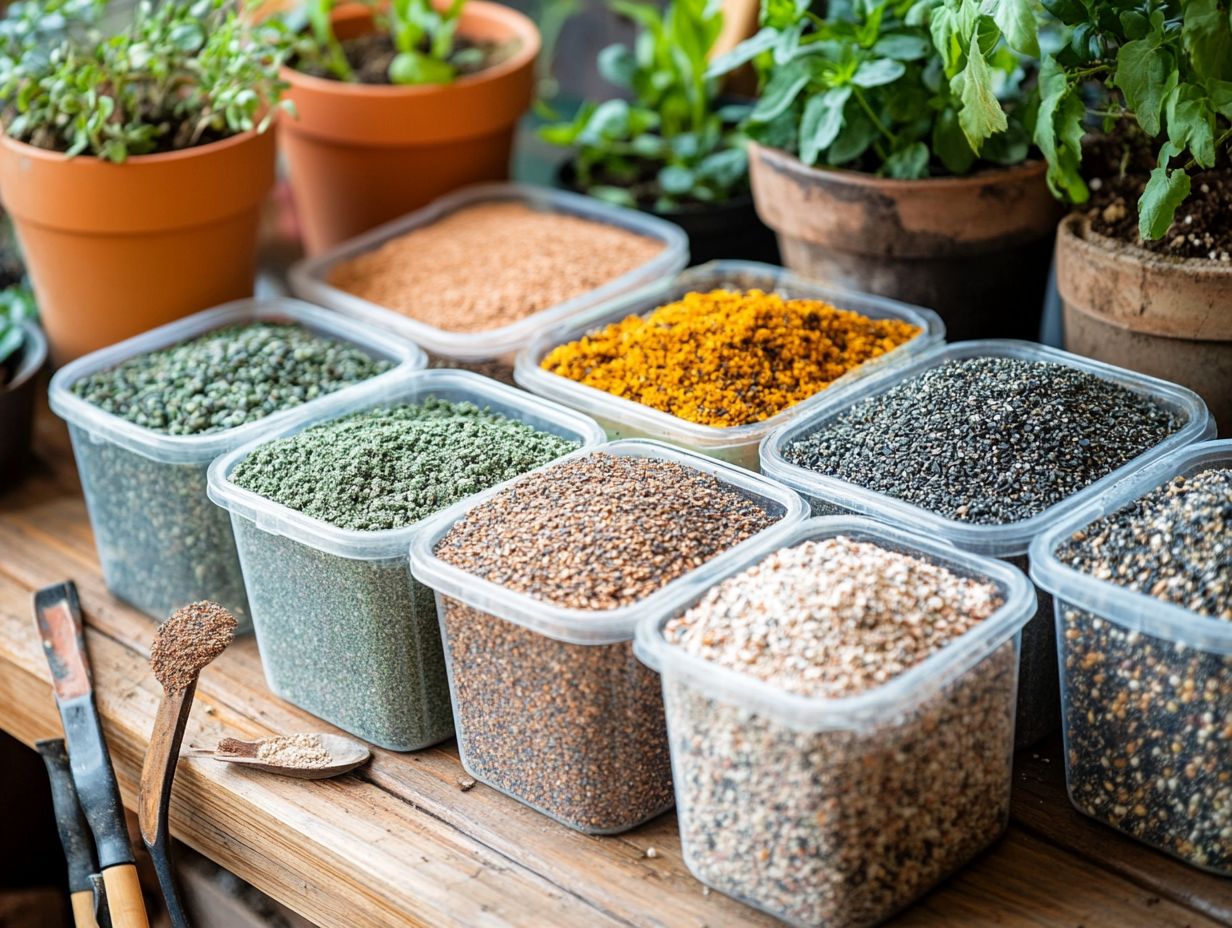
- Understanding the basics of potting mix is crucial for choosing the right one for your plants.
- Factors such as plant type, drainage, and nutrient requirements should be considered when selecting a potting mix.
- Regular repotting and proper maintenance can ensure healthy plants and successful reuse of potting mix.
1. Understanding the Basics of Potting Mix
Potting mix is crucial for plant health. It provides essential nutrients and support for all types of plants, from houseplants to vegetables.
A well-crafted potting mix features a harmonious blend of organic and inorganic materials, each playing a crucial role in nurturing plant health. Peat moss, celebrated for its moisture-retaining abilities, ensures consistent hydration while enhancing soil aeration. Coir, sourced from coconut husks, presents a sustainable alternative to peat, improving drainage and bolstering nutrient retention.
Perlite, the lightweight volcanic glass, is vital for maintaining proper air circulation within the mix, preventing root rot by creating pockets of air that promote healthy root development. Together, these components form an ideal environment that balances moisture, nutrients, and airflow essential elements for thriving plants.
2. Types of Potting Mixes Available
You ll find various potting mixes tailored to different plant needs. Choosing the right mix helps create optimal growing conditions!
For example, commercial potting mixes typically contain a blend of peat moss, perlite, and fertilizers designed for quick growth in potted plants. Organic options may feature ingredients like composted bark, coconut coir, and natural fertilizers, promoting sustainability and eco-friendliness.
Specific components, such as vermiculite, enhance moisture retention and aeration, making them ideal for moisture-loving plants. Meanwhile, coir serves as a sustainable alternative to peat moss, improving drainage and structure for tropical varieties. Understanding these nuances is crucial for cultivating thriving plant life.
3. Factors to Consider When Choosing a Potting Mix
Consider drainage, water retention, pH balance, and necessary nutrients when selecting a potting mix. Each plant has unique needs!
Different plant species come with their own nutrient needs; for example, succulents flourish in well-draining mixes that help prevent root rot, while tropical varieties often enjoy substrates that retain moisture. Incorporating perlite into your mix can significantly enhance aeration, which is crucial for root health, especially in denser blends. On the other hand, coir serves as a superb organic additive, boosting water retention without causing sogginess.
Finding this balance guarantees that your plants not only receive the nutrition they require but also thrive in an environment that closely resembles their natural habitats, ultimately leading to lush growth and vibrant blooms.
4. How to Choose the Right Potting Mix for Different Types of Plants
Choosing the perfect potting mix can be a game-changer for your plants! Whether you’re nurturing delicate orchids, vibrant houseplants, or starting a productive vegetable garden, each category has unique requirements that are key to their optimal growth.
Understanding the specific needs of these plants can significantly enhance their health and flowering potential. For instance, orchids thrive in a mix that promotes excellent drainage and aeration. Think bark, charcoal, and sphagnum moss, which beautifully mimics their natural epiphytic habitats.
Houseplants generally prefer a loamy mix rich in organic matter. This helps maintain consistent moisture and nutrient availability.
For vegetable gardens, a blend that incorporates compost and well-draining soil is invaluable. This ensures that the roots receive essential nutrients while avoiding waterlogging. Tailoring the potting mix for each type of plant whether in Australia or the UK creates a thriving environment that leads to bountiful blooms and impressive harvests.
5. Common Mistakes to Avoid When Choosing a Potting Mix
When selecting a potting mix, it s easy to fall into common mistakes. Believing misleading market claims or picking a mix that doesn t have the right components can seriously hinder your plants’ growth and vitality.
To truly maximize the health of your greenery, prioritize organic materials. These provide essential nutrients and enhance soil structure. Never underestimate the importance of checking ingredient quality; cheap blends often come loaded with fillers that offer little to no benefit.
Consider the unique ability to hold water and drainage needs of your plants. Choose mixes tailored specifically for their type, such as those found in DIY potting mix recipes for indoor plants. Take the time to read labels, research brands, and even consult local horticulturalists for recommendations. This will empower you to make informed, suitable choices that encourage your plants to thrive.
6. How to Prepare and Use Potting Mix for Planting
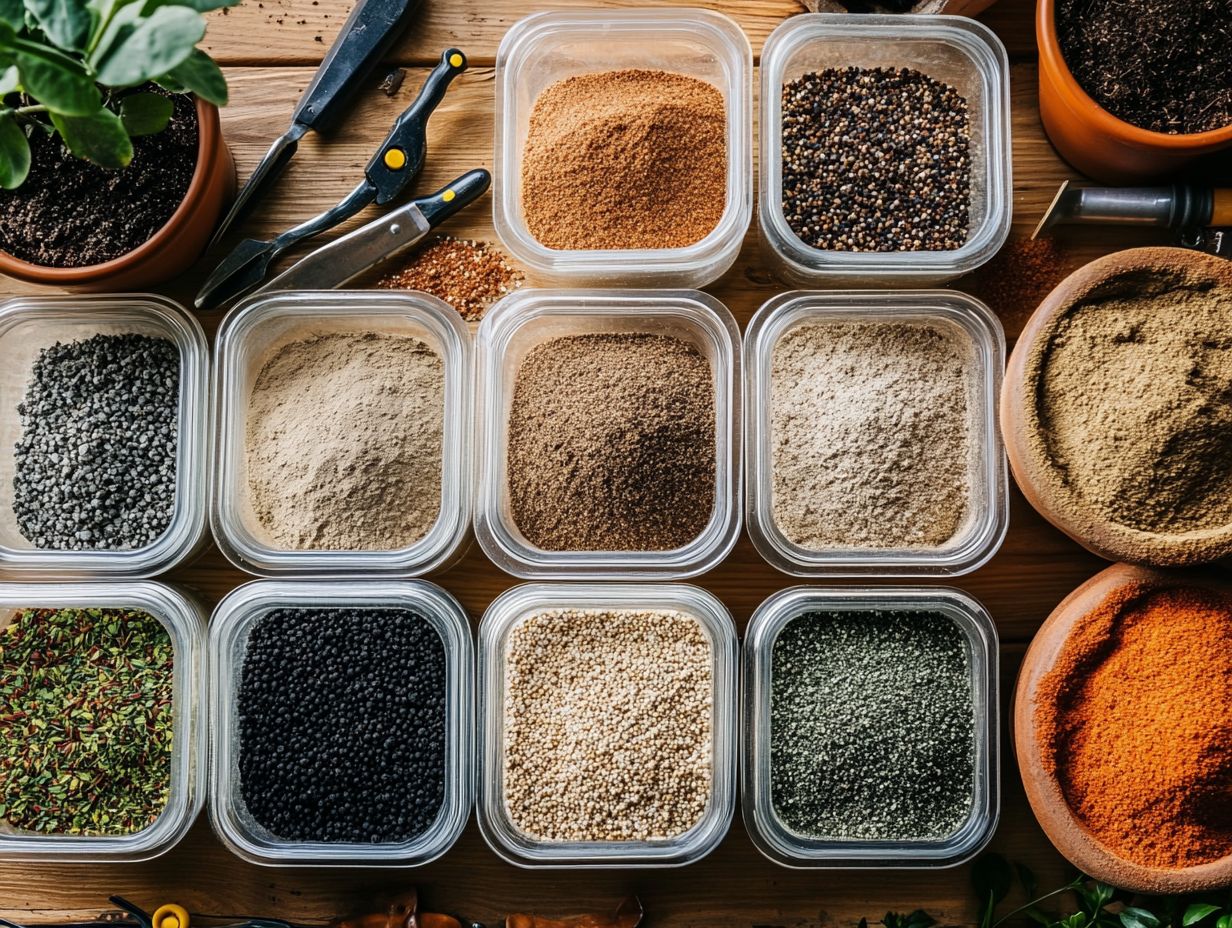
Preparing and using potting mix for planting is an art form! It involves a series of deliberate steps to create the perfect blend for supporting plant growth, whether you re starting seeds or repotting existing plants. Incorporate elements like organic fertilizer to improve water retention for optimal results.
- Start by gathering your key components: peat moss, vermiculite, and compost. These ingredients form the foundation of your mix.
- Carefully measure and combine them in a large container. Aim for a uniform texture and consistency that will provide your plants with the best possible environment.
Once the dry ingredients are mixed, it’s time to introduce organic fertilizer using a guide like how to choose fertilizers for different plants. This adds essential nutrients. Gradually add water, stirring frequently, until you achieve a moist yet crumbly consistency. Striking this balance is crucial; too much moisture can lead to root rot, while too little can stifle growth.
With your ideal blend perfected, you re now ready to fill your pots and create the nurturing environment your plants deserve.
7. Tips for Maintaining Healthy Plants with the Right Potting Mix
Maintaining healthy plants hinges on choosing the right potting mix. It should support growth and nurture beneficial microbes and mycorrhizal fungi, which help plants absorb nutrients and bolster overall plant vitality.
For the best results, ensure your potting mix retains adequate moisture while still allowing for proper drainage. Overly saturated soil can lead to root rot and a host of other issues. Incorporating organic matter like compost elevates microbial activity, creating a thriving ecosystem for your plants.
Implement proper watering techniques check soil moisture before reaching for the watering can. Using a balanced fertilizer at the right intervals can significantly influence plant health. By paying attention to these practices, you can cultivate an environment where your plants not only survive but truly flourish!
Ready to boost your garden’s potential? Start choosing the right potting mix today!
8. DIY Potting Mix Recipes for Different Types of Plants
Creating your own DIY potting mix tailored to different plant types can be an incredibly rewarding endeavor. It allows you to customize your blends using ingredients like coir additives, peat, and vermiculite, ensuring you provide the ideal growing conditions for each plant.
By carefully selecting the right ratios, you can ensure orchids receive the aeration they crave. At the same time, your houseplants can enjoy a moisture-retentive base. For instance, a mix designed for orchids might consist of:
- 50% bark
- 30% sphagnum moss
- 20% charcoal
This combination promotes healthy root systems and minimizes the risk of rot. On the flip side, houseplants often thrive in a balanced blend of:
- 40% potting soil
- 30% perlite (a lightweight material that helps with soil aeration)
- 30% compost
This enriches the soil with organic matter, giving your plants the nourishment they need. Regarding vegetable gardens, a different approach is required. For more details on how to effectively choose your soil, refer to this guide on how to buy quality potting soil.
- 60% garden soil
- 20% organic compost
- 20% sand
can significantly enhance drainage and nutrient content, ensuring robust growth. Each ingredient plays a vital role in maintaining optimal soil health and nurturing vibrant plants, making your gardening journey all the more fulfilling.
9. Understanding the Nutrient Needs of Your Plants
Understanding the nutrient needs of your plants is vital for their overall health and vitality. Proper soil nutrients, including organic fertilizers, ensure that your plants receive everything they need to thrive.
Pay attention to key elements like nitrogen, phosphorus, potassium, calcium, magnesium, and sulfur. Each plays a crucial role in processes such as photosynthesis and root development.
To effectively assess these needs, regularly check the soil’s pH levels and nutrient content. This can easily be done with simple testing kits available at garden centers.
Air drainage is another critical factor in maintaining nutrient availability. A well-aerated potting mix prevents waterlogging, allowing roots to absorb essential minerals without the risk of root rot. This ultimately leads to healthier, more vibrant plants.
10. How to Reuse and Recycle Potting Mix
Reusing and recycling potting mix is not just an eco-friendly choice; it s a powerful way to reduce waste and enhance the health of your soil. By incorporating earthworm castings and promoting ongoing microbial activity within the mix, you’re setting the stage for a thriving garden.
Sift through your old potting mix to remove any dead roots or debris. This works wonders in rejuvenating the soil’s texture and nutrient profile.
Consider adding materials like perlite (which boosts aeration) or vermiculite (which helps with drainage) and incorporate organic matter such as compost. This introduces a wealth of beneficial nutrients.
Recycling potting mix not only boosts your plants growth but also helps the environment. You re making a positive impact!
What Are the Benefits of Using the Right Potting Mix for Your Plants?
Using the right potting mix can transform your gardening experience, offering numerous benefits such as enhanced plant growth, improved moisture retention, and essential nutrients. Whether you re a novice or a seasoned gardener, this is a product worth considering.
A quality potting mix comprises various components, like peat moss, coconut coir, and perlite. Each plays a vital role in creating an optimal growing environment. For instance, peat moss excels at retaining moisture while allowing excess water to drain away. This helps prevent the dreaded root rot that plagues many plants.
Meanwhile, perlite promotes aeration, ensuring your plants roots can breathe and grow stronger.
Investing in a high-quality potting mix doesn t just foster immediate plant health; it paves the way for long-term vitality. Imagine watching your garden thrive through changing seasons, making your gardening journey all the more rewarding.
How Does Potting Mix Differ from Garden Soil?
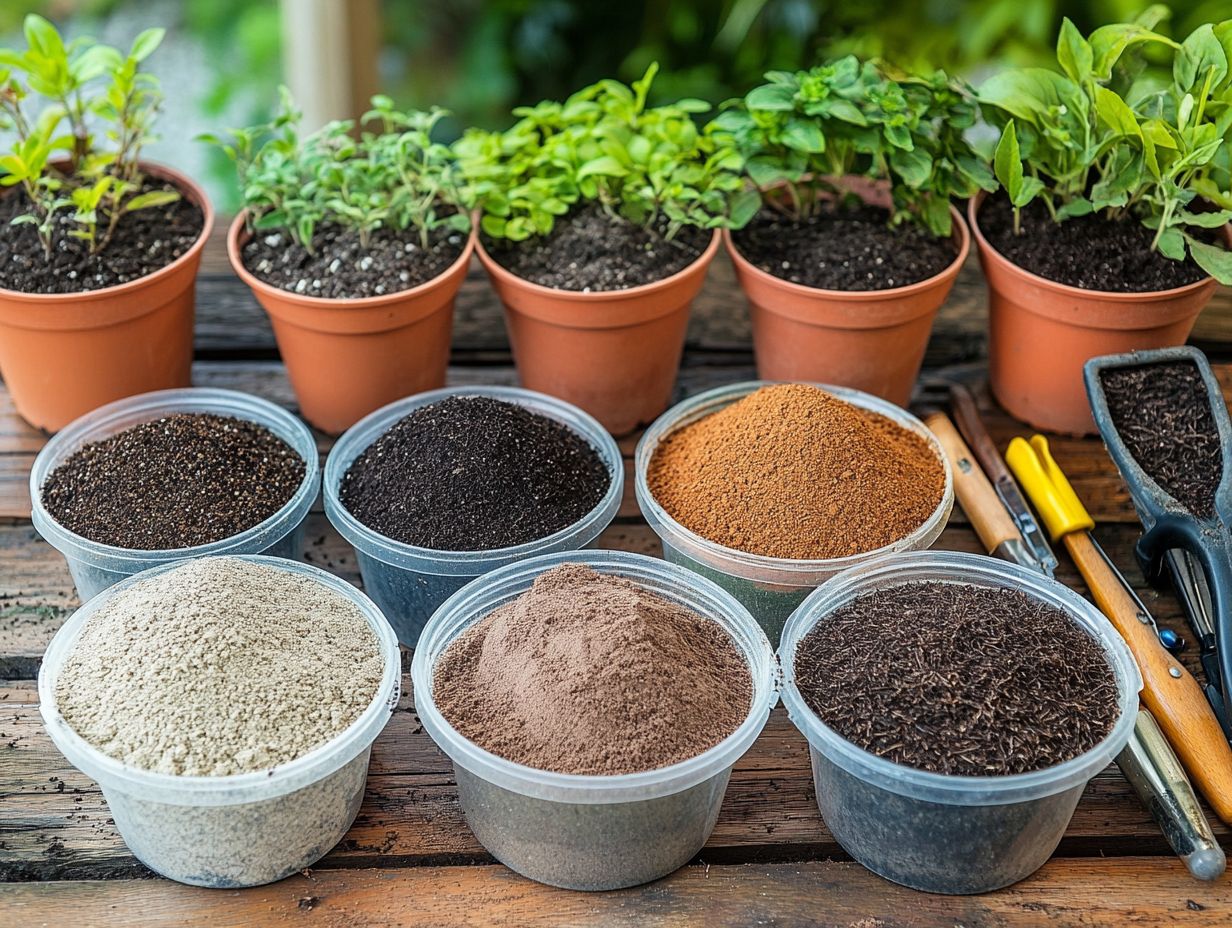
Potting mix sets itself apart from garden soil in both composition and purpose. It’s crafted specifically to provide optimal drainage, a balanced mix of nutrients, and a lightweight structure that supports your potted plants. In contrast, garden soil may not offer these essential qualities.
The unique combination of organic materials, such as peat moss and perlite in potting mixes, promotes healthy root development and moisture retention, making it particularly beneficial for container gardening.
Garden soil, while often rich in nutrients and beneficial microorganisms, can become compacted and poorly drained. This can present challenges for delicate seedlings and container-bound plants.
Understanding the differences between these two types of soil is essential for gardeners aiming to cultivate thriving green spaces. The right choice can significantly influence your plants’ health and growth, especially considering the varying climates and conditions you may encounter.
What Are the Common Ingredients in Potting Mix?
Common ingredients in potting mix include peat, coir, perlite, and vermiculite. Each plays a vital role in enhancing soil structure, drainage, and moisture retention for your plants.
Peat, sourced from decomposed plant material, excels in moisture retention, ensuring your roots receive a consistent water supply. Coir, derived from coconut husks, is a sustainable alternative that promotes excellent aeration.
Perlite, a volcanic glass, helps improve drainage and prevents root rot. Meanwhile, vermiculite, with its lightweight quality, is perfect for retaining nutrients and moisture. When these elements blend seamlessly, they create an ideal environment for healthy root development.
To elevate this mix even further, consider adding organic fertilizers, which are natural materials that provide essential nutrients. This addition leads to vibrant foliage and robust growth, ultimately ensuring your plants thrive beautifully over time.
How Often Should You Repot Your Plants and Change the Potting Mix?
Repotting your plants and refreshing the potting mix is crucial for nurturing robust growth. The frequency of this endeavor largely depends on factors such as the type of plant, its growth rate, and the nutrient depletion within the mix.
Fast-growing plants typically need repotting every 1 to 2 years, whereas slower-growing ones can thrive in the same pot for up to three years.
Look out for these signs that your plant might be ready for a new home:
- Roots pushing out of drainage holes
- Stunted growth that seems to have hit a wall
- Yellowing leaves, often a telltale sign of nutrient deficiencies
By regularly refreshing the potting mix, you not only replenish essential nutrients but also enhance air circulation in the soil. This encourages healthier root development and boosts the overall vitality of your plants.
What Are the Signs of a Poor Potting Mix?
Recognizing the signs of a poor potting mix is essential for your plants’ health. Indicators like inadequate water retention, nutrient deficiency, and compacted soil can lead to stunted growth and weak plants.
If you notice water pooling on the surface instead of being absorbed, it may signal an overly dense mix that hampers drainage. Conversely, if the soil feels excessively dry and crumbly, it likely can’t hold enough moisture for the roots.
These unfavorable conditions stress your plants and make them more vulnerable to pests and diseases.
To improve a subpar potting mix, consider incorporating organic matter such as compost or peat moss. These additions enhance moisture retention and supply vital nutrients. If the mix is irreparable, replacing it entirely with a high-quality, well-draining potting blend can dramatically boost your plants’ vitality.
Check your plants today and ensure they thrive!
How Can You Tell If a Plant Needs to Be Repotted?
Identifying when your plant is ready for a repot can greatly enhance its growth. Look for signs like roots that have no room to grow, slow growth, and soil that dries out too quickly.
You might also notice roots creeping through the drainage holes of the pot. This means your plant is cramped and needs more space to thrive.
Yellowing leaves often signal nutrient deficiencies caused by depleted soil. Repotting promptly addresses these issues and fosters healthier growth.
Providing fresh nutrients and a larger environment allows roots to expand. This gives your plant a fresh start, encouraging vibrant foliage and robust health.
Frequently Asked Questions
What is potting mix and why is it important for my plants?
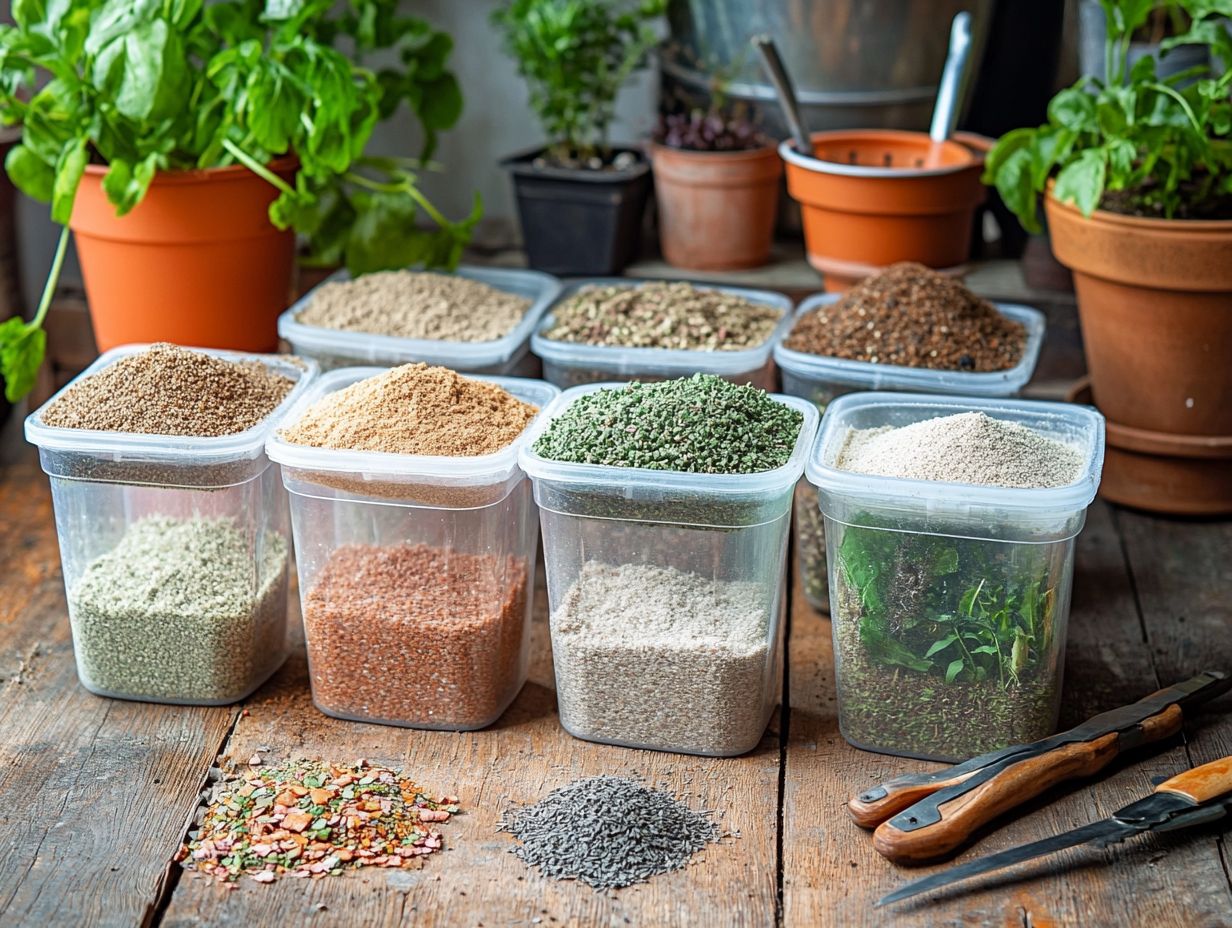
Potting mix, or potting soil, is a special soil mixture designed for potted plants. It provides nutrients, aeration, and drainage for healthy growth.
Using the right mix promotes root growth, prevents diseases, and ensures proper water retention.
How do I choose the right potting mix for my plants?
The right potting mix depends on your plants. Consider their preferred pH level and water needs.
Look for mixes labeled for specific plants, like cacti or orchids.
Can I make my own potting mix at home?
Yes! You can combine ingredients like peat moss, vermiculite, decomposed wood, and compost to create your own mix.
However, achieving the right nutrient balance may be tricky compared to pre-made mixes. Research and sterilize ingredients to avoid pests.
How often should I replace the potting mix for my plants?
Replace potting mix every 1-2 years or when it breaks down. The ideal mix composition varies based on local soil conditions.
This is crucial for plants that have outgrown their pots or need frequent repotting.
Can I reuse potting mix from previous plants?
You can reuse potting mix, but it must be sterilized first. Bake it at 180 F for 30 minutes or soak it in a water-bleach solution.
This will eliminate any pests or diseases, making the mix safe for reuse.
Do all plants need the same type of potting mix?
No, different plants have unique needs. Some require a mix with more sand for drainage.
Always research your plants’ specific needs to choose the right potting mix.

